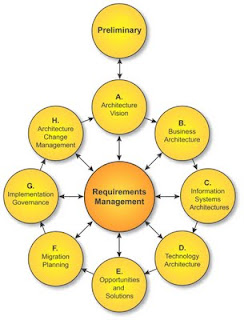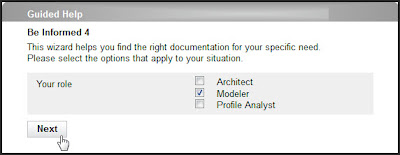Smart devices for cool people: We don’t need no documentation
I have bought a new coffee machine this weekend. Not that the old machine stopped working, I just didn’t like its coffee anymore. The old coffee machine was one of those Senseo machines, very cool 10 years ago, but not really living up to the expectations when it came to the quality of the coffee. Plus that you really needed to apologize up front to visitors for having such an example of ancient technology in your kitchen.
But then the new machine: it is cool, it is white, it is small and it makes excellent coffee. Even better: by buying it I became a member of an exclusive society of coffee enjoyers, amongst who George Clooney is probably the best known. So with high anticipation I unpacked the machine.
First came the exclusive black menu card holder, containing a menu card with an overview of all the special flavors that were now within my reach and an invitation to become a member of this exclusive coffee drinkers club. Next came the starters set with 16 exclusive coffee cups in 8 different flavors. Then the machine: white and shiny in all its exclusiveness. In a corner of the box I also found two simple booklets: one being the warranty booklet, the other one being the user manual.
Considering the fact that my new coffee machine only has two buttons, I didn’t expect a lengthy explanation of its functionality, but a short task-based explanation on how to operate it would be handy. Instead I found a set of instructions that looked like a comic book full of short stories, not sure where one ended and the other one started. Every page showed me the name of the instructions that were on the page in more than 10 languages, making it very hard to find my way. In the end I gave up and got myself a cup of coffee using the button that looked like a regular coffee cup on top of the machine. The coffee tasted good, but I would have liked something to read while I was drinking it.
Let’s have a first look at the instruction on how to prepare the machine for first use.
It would take me at least a full page to do a complete analysis of this instruction, starting with the ambiguous first picture all the way to the 8th picture where I can either hold a button – or both buttons – for 25 seconds or wait for 25 seconds. Not to mention the 7th picture that instructs me to press either one of the buttons or first start with pressing the right button and then the left button. By doing the latter the machine will immediately start spooling water, so that was obviously not what I was meant to do.
Immediately after finishing my first cup of coffee, I registered on the member website and downloaded the app on both my iPhone and iPad. Trembling in anticipation of this whole new, exclusive world that would open up at my fingertips I browsed through the menu option, finding out that the app offers not much more than an electronic shop that makes it possible to order Nespresso cups everywhere at any time. Handy if you know that you need to refill your stock, but what if you ran out of stock without noticing it? A smart app would warn me and help me order my favorite cups in time. This app doesn’t. Neither does it help me preparing my machine for first use or adjusting the machine to my personal taste.
So in my next blog I will do some suggestions on how to improve the overall experience for George Clooney and countless anonymous Nespresso members by offering a smart – and exclusive – coffee making solution using technology that is already there. I think this offers an excellent show case for contextual intelligence in our everyday life.
But then the new machine: it is cool, it is white, it is small and it makes excellent coffee. Even better: by buying it I became a member of an exclusive society of coffee enjoyers, amongst who George Clooney is probably the best known. So with high anticipation I unpacked the machine.
First came the exclusive black menu card holder, containing a menu card with an overview of all the special flavors that were now within my reach and an invitation to become a member of this exclusive coffee drinkers club. Next came the starters set with 16 exclusive coffee cups in 8 different flavors. Then the machine: white and shiny in all its exclusiveness. In a corner of the box I also found two simple booklets: one being the warranty booklet, the other one being the user manual.
George Clooney doesn’t read (manuals)
I know, normal people don’t read manuals unless they have a problem. But I am not a normal person, I always browse through a manual to find the hidden features and possible optimization steps for the equipment I have bought.Considering the fact that my new coffee machine only has two buttons, I didn’t expect a lengthy explanation of its functionality, but a short task-based explanation on how to operate it would be handy. Instead I found a set of instructions that looked like a comic book full of short stories, not sure where one ended and the other one started. Every page showed me the name of the instructions that were on the page in more than 10 languages, making it very hard to find my way. In the end I gave up and got myself a cup of coffee using the button that looked like a regular coffee cup on top of the machine. The coffee tasted good, but I would have liked something to read while I was drinking it.
Simple tasks for exclusive club members
So let’s have a look at the functionality that this coffee machine has to offer. What does it do? Well, it makes coffee: either regular coffee (Lungo) or espresso. But there is more. There are a number of tasks that I need to master in order to make great coffee, keeping my machine in good shape and perhaps even saving electricity:- Preparing for first use
- Adjusting the water level
- Preparing coffee
- Emptying the system
- Resetting to factory defaults
- Setting the energy saving mode
- Descaling the machine
- Cleaning the machine
- Troubleshooting
Let’s have a first look at the instruction on how to prepare the machine for first use.
It would take me at least a full page to do a complete analysis of this instruction, starting with the ambiguous first picture all the way to the 8th picture where I can either hold a button – or both buttons – for 25 seconds or wait for 25 seconds. Not to mention the 7th picture that instructs me to press either one of the buttons or first start with pressing the right button and then the left button. By doing the latter the machine will immediately start spooling water, so that was obviously not what I was meant to do.
Cool people want smart apps
Of course Nespresso offers a cool app to their members, suitable for both iPhone/iPad and Android users.Immediately after finishing my first cup of coffee, I registered on the member website and downloaded the app on both my iPhone and iPad. Trembling in anticipation of this whole new, exclusive world that would open up at my fingertips I browsed through the menu option, finding out that the app offers not much more than an electronic shop that makes it possible to order Nespresso cups everywhere at any time. Handy if you know that you need to refill your stock, but what if you ran out of stock without noticing it? A smart app would warn me and help me order my favorite cups in time. This app doesn’t. Neither does it help me preparing my machine for first use or adjusting the machine to my personal taste.
An even better brand experience
Bad documentation, complex routines with two buttons and an app that lacks functionality can only mean one thing: Nespresso expects its members to be smart. But I don’t want to be smart, I want to drink coffee and I want my devices to be smarter than me and supporting me in complex – and not so complex – tasks.So in my next blog I will do some suggestions on how to improve the overall experience for George Clooney and countless anonymous Nespresso members by offering a smart – and exclusive – coffee making solution using technology that is already there. I think this offers an excellent show case for contextual intelligence in our everyday life.





Comments